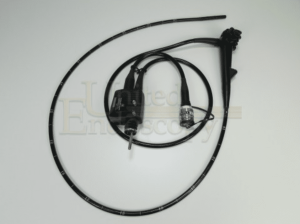How to Clean, Disinfect, and Sterilize an Endoscope
Posted August 23, 2017 in Care of Endoscopy Equipment
 Like all medical tools, endoscopes must be carefully cleaned, disinfected, and sterilized after each use. Caring for your equipment and keeping it clean protects you and your patients’ health and safety. The following is a generalized guideline for cleaning endoscopy equipment, made available for your reference. Be sure to follow manufacturer guidelines and all regulatory guidelines for your area when using and cleaning any endoscopy equipment.
Like all medical tools, endoscopes must be carefully cleaned, disinfected, and sterilized after each use. Caring for your equipment and keeping it clean protects you and your patients’ health and safety. The following is a generalized guideline for cleaning endoscopy equipment, made available for your reference. Be sure to follow manufacturer guidelines and all regulatory guidelines for your area when using and cleaning any endoscopy equipment.
Ensuring Patient Safety
Because endoscopes are used in the diagnosis and treatment of health conditions, they should be kept clean and sterile. One reason for this is to prevent infections from forming due to microbial growth. Another reason is controlling the spread of an infection that may already exist. Transmission of infections is a major risk in medical facilities. Whether an endoscope is used for diagnosis or treatment, sterilization of the endoscope protects the patient from becoming infected by bacteria, viruses, and other microbes that could be present on the medical devices. It also protects the endoscopic surgeon and future patients from becoming infected due to microbes that have attached to the endoscope during or after a previous patient’s endoscopy.
Pre-Cleaning
First, all debris must be removed from the endoscope so that cleaning, disinfecting, and sterilizing will be more effective. Any retained debris can interfere with or even inactivate the chemical solutions used to kill microorganisms. Debris could include proteins, carbohydrates, fats, chemical salts, and other substances that come from blood or fluids in the body.
Immediately after removing the endoscope from your patient, wipe it with a cloth or sponge that has been soaked in a special cleansing detergent. This cloth or sponge must be disposed of or sterilized between patients. The equipment should then be taken to a specified cleaning area. Flush the endoscope with the detergent until it is clear, then suction it with air. Air and water channels should be flushed according to the instructions. The endoscope should then be put in a closed container and moved to a reprocessing area for disinfection and sterilization. This area should be in a completely separate room from where the procedure took place to minimize the risk of contamination.
Manual Cleaning
Once the endoscopy equipment is in the specified cleaning area, it should be manually cleaned. Fill a basin with a freshly prepared solution of water and a medical-grade, neutral pH detergent that is low-foaming and formulated for endoscopes. Follow the manufacturer’s instructions for dilution and use. With the endoscope submerged in the solution, brush and wipe it with a small, soft brush and cleaning tools that are non-abrasive and lint-free. Brush all channels of the endoscope with compatible tools. Rinse and re-brush until there is no more visible debris. Some soaking may be required. Finally, rinse thoroughly and use forced air to remove all water from the endoscope. Dry it with a soft, lint-free cloth.
Disinfection and Sterilization
Disinfection and sterilization kill any microbes that are present on endoscopy equipment. Disinfectants and sterilants should be used according to the manufacturer’s recommendations and tested regularly for effectiveness. This part of the cleaning process can be done manually or with an automated reprocessor.
For manual disinfection and sterilization, the endoscope and all removable parts should be immersed in the solution, and the disinfectant should be flushed through all channels with no air pockets remaining. The endoscope should stay in the solution for the recommended time length. Air should be used to purge all channels before removing the endoscope. Afterward, it should be rinsed, dried, flushed with alcohol, and properly stored.
For automated disinfection, the endoscope should be manually cleaned before it is placed in the machine. Obeying the manufacturer’s instructions, complete the full cleaning cycle from start to finish, avoiding interruptions as this will require starting over. Small channels in some endoscopy tools may need to be reprocessed by hand if the machine cannot do so. The final step should be an alcohol rinse cycle, which may need to be performed by hand. The equipment should be carefully dried and stored appropriately to protect against contamination.
Endoscopy equipment should always be cleaned, disinfected, and sterilized for infection control. Doing so will ensure the safety of you and your patients and will allow endoscopy to continue to work well for your medical practice for years to come. To learn more about our refurbished endoscopy equipment, call United Endoscopy at (951) 270-3400 (local) or (800) 899-4847 (toll-free), or fill out our online contact form today.
